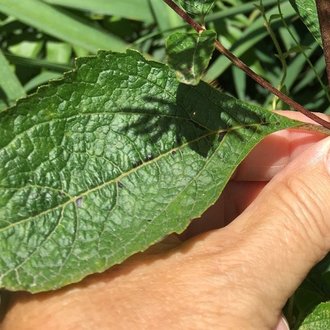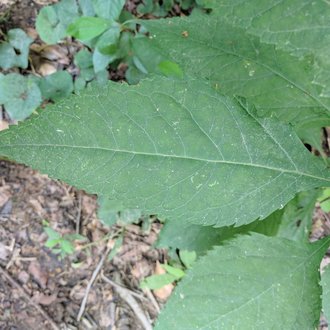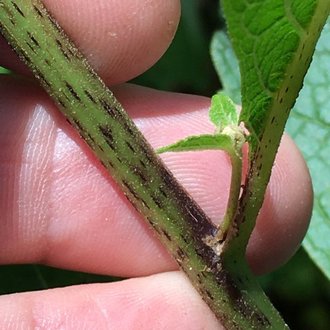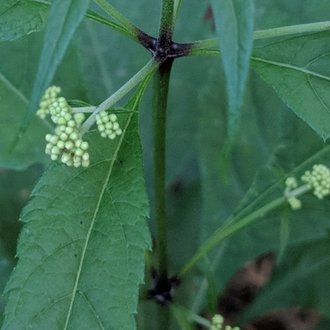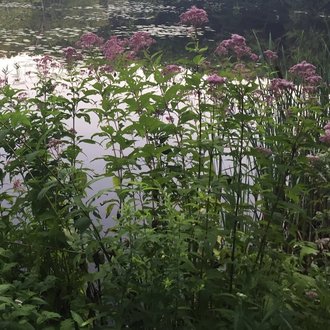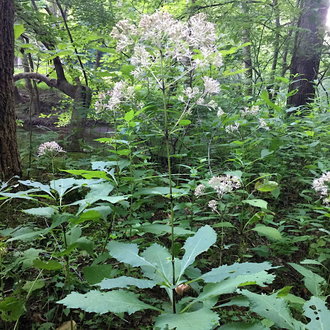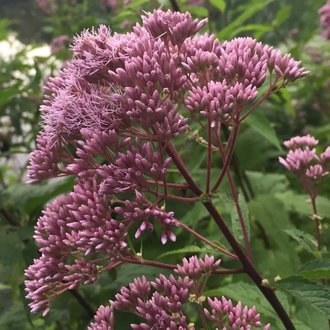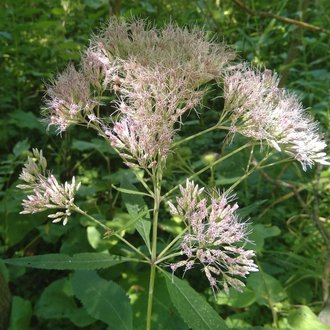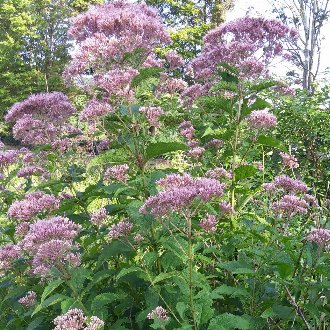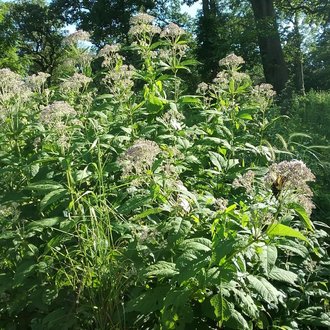Coastal Plain Joe Pye Weed vs Sweetscented Joe Pye Weed
These plants are occasionally confused in the region where their ranges overlap; both tend to have 3-4 leaves per whorl. They are usually easily distinguished by leaf vein pattern, and the color and density of the inflorescence can also provide ID clues. Populations in the north can be easily distinguished by stems. E. purpureum averages taller than E. dubium, but their heights overlap. However, their habitats are almost entirely non-overlapping, with E. dubium preferring acidic, wet ground in sunnier conditions, and E. purpureum preferring drier, shadier habitats.
Coastal Plain Joe Pye Weed (Eutrochium dubium) | Sweetscented Joe Pye Weed (Eutrochium purpureum) |
A perennial of moist, sandy, acidic soils native to the coastal plain from New England south through South Carolina. | A tall perennial of partly-shaded areas, preferring drier and shadier conditions than other Eutrochium species. |
Leaves distinctly triple-veined, with side-veins originating near the base of each leaf traveling a significant way towards the leaf tip. Photo © Becky, Public Domain. | Leaves not triple-veined: side-veins originating near the leaf base are shorter and end sooner at the leaf margin. Photo © Mirko Schoenitz, Public Domain. |
Stems spotted, not appreciably darker near nodes. Photo © Becky, Public Domain. | Stems may be spotted in some southern populations, but in the north, stems are distinctly green with dark purple at nodes. Photo © Mirko Schoenitz, Public Domain. |
Found in sunnier, wetter habitats, such as wetlands and stream borders. More common near the east coast. Usually limited to acidic soils. Photo © Matt Schenck, CC BY 4.0. | Found in drier (better-drained), shadier habitats, such as moist forests. More common inland. Photo © Katja Schulz, CC BY 4.0. |
Inflorescence usually more densely-packed, usually a brighter pink. Photo © Matt Schenck, CC BY 4.0. | Inflorescence usually sparser, more spread out, usually a paler pink, often closer to white in color. Photo © Marilynn Miller, CC BY 4.0. |
Averages slightly shorter, typically to 5 feet, rarely 6 feet, often shorter. Photo © Kristof Zyskowski, CC BY 4.0. | Averages taller, typically to 6.5 feet, occasionally 7 feet, although young plants or plants on unfavorable sites may be as short as 3 feet. Photo © Mary Crickmore, Public Domain. |
References & External Resources
These short lists show only links helpful for ID. For a complete list of references and resources also covering other aspects of ecology, visit the links section of the full article on each plant, which is the first entry here.



